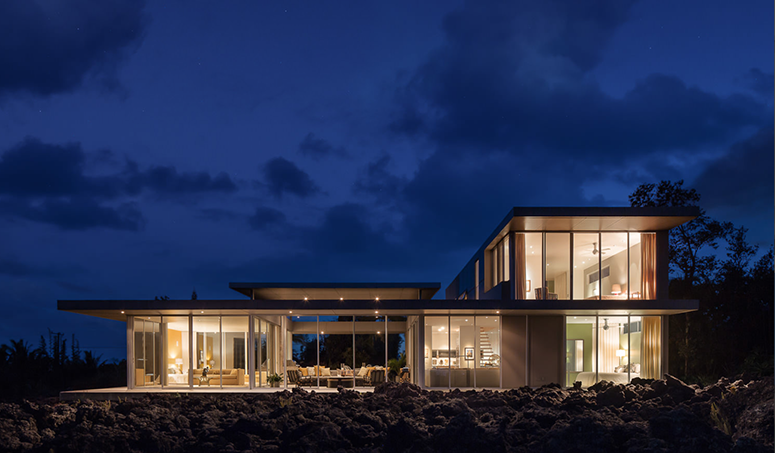In 1990, I met a young architect, Tom, who was funny, outgoing, and adventurous. He didn’t live from a place of fear. Our design aesthetics were similar, and he drove an old white Alfa Romeo convertible. He treasured kindness, which flows both ways. Beyond having a sporty car, he didn’t care much about possessions and was incredibly frugal. He bought a small apartment building in the Haight with a business partner while he was still young. Several years ago, he moved to Australia and has designed mostly private residences, including his own renovation, which was published. He comes here once a year or so to see his family and has become incredibly wise.
Recently, he sold the place in San Francisco and needed to purchase another investment property. He took a chance on an unusual house in Hawaii near Pahoa designed by noted San Francisco and Hawaii architect Craig Steely. The owner of the Hawaii house, Robert Trickey, was well known in local design circles for his expert upholstery work. Robert softened the modern house with color, accessories, and his own furnishings.
Craig became well known after this house, known as Lavaflow 1, was featured in Dwell and elsewhere. Like Tom, Craig is also generous and hosted us when we rented one of the other houses he designed in Hawaii. Craig brought us along to a July 4th party at Robert’s, and we ate well and swam in the gorgeous pool. This year, I found out that Tom was interested in purchasing the house. Circles overlapping. Although I don’t think there are any circles in this house! Tom and I conducted this interview over email.
Q: Why did you buy Lavaflow 1? You are just the second owner, correct?
A: I’m the second owner. Robert Trickey developed the house and lived there continuously, or rented it while living locally or sometimes travelling. I’ve come to understand that Robert was quite a pioneer out there and bought most of the parcels around him. He has since sold all of them off, and they have all been developed, except for the lovely bare Lava parcel next door, which I was also able to purchase from him. Quite truthfully, I bought the Trickey house out of economic necessity, aesthetic desire, and a great bit of coincidence. In, short, this was an American style tax exchange deal done by an expat from San Francisco who lives in Australia.
Q: Did you know the house from publications?
A: Probably so. I remember seeing it somewhere and thinking, “Oh, that looks like a Sydney house.”
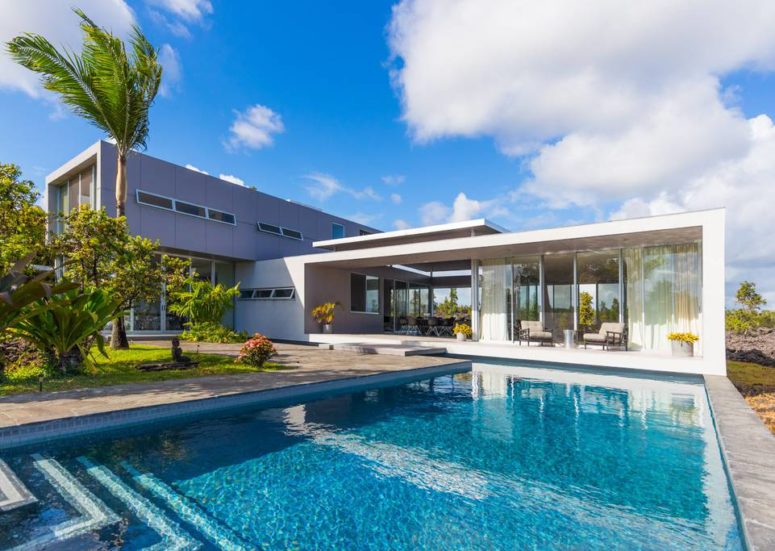
Q: Did you know Craig Steely at school? Didn’t you go around the same time?
A: I think I’m a bit older than Craig. We never met, yet I was aware of some of his smaller works happening in San Francisco just as I was migrating to Sydney for work. I heard that he went to Cal Poly as well, and I felt proud that my school produced a good designer, as we are often known as good technical stock, but not good design architects. That always bothered me, as good architects are good designers and good technicians.
Q: Had there been any structural modifications to the house?
A: None that I know of, other than a slight modification to the studio, which was next to the garage for Robert’s furniture making. He added a kitchen to it, so now it can work as a self-contained unit.
Q. What has your approach been with the changes in furnishings?
A: Simplify and subtract. The mark of a good house is that it stands alone without furnishings.
The great strength of this house lies in its strong, contrasting, muscular geometry. The transparency contrasts beautifully with the chaotic ruggedness of that lovely black lava field that it sits on. I wanted to reveal that original design intent a bit more with the furniture and garden.
On the inside, I used strictly modernist or more transparent furnishings, and subtracted the wall colors to enhance the indoor/outdoor continuity.
On the outside, I pared down the garden, subtracting red and orange colors or nonnative ornamental plants to reveal and reinforce the native, powerful black lava and green ohia trees that really belong to that place.
Minimalism really works there. If in doubt, subtract.
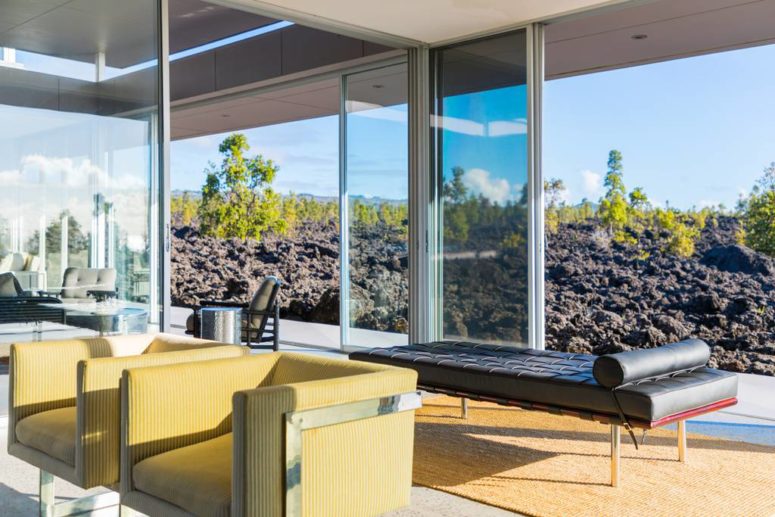
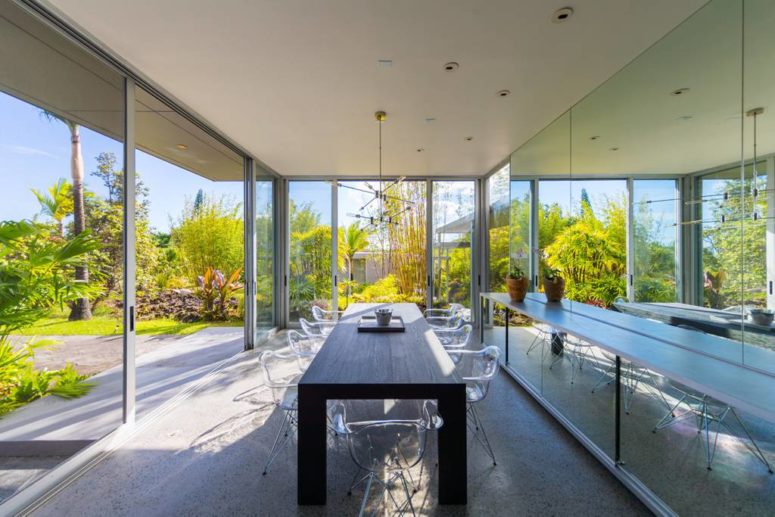
Q: Do you plan to add more color with art?
A: I hope so. I’m doing a few of my own paintings inspired by the place. It’s ongoing.
Q: Has Craig been over since you refurnished the house?
A: No. I’ve just sent him a few photos that he requested. We had a really fun discussion about the house before I bought it. I think we’re aligned aesthetically and doing similar work.
Q: Do you worry about the lava returning? I understand that a recent lava flow nearly destroyed Pahoa, the closest town.
A: No. I’m 55. I’ll take the risk. It’s true about Pahoa. The lava stopped right at the dump. It’s amazing. Part of my interest with that place is that it reminds you of universal themes; you’re in a temporary situation in this moment, because the universe is all about creation and destruction. We are all just microscopic blips.
I also think that the best architecture reminds us of this fact of being—alive in this container just right now, in this moment—by creating a special relationship to a powerful site. That simple glass box functions like a prism of awareness to the power in the universe. It makes you aware that you’re not forever. It’s saying, “Be aware of that fact and act accordingly—now before you’re gone—be fearless.”
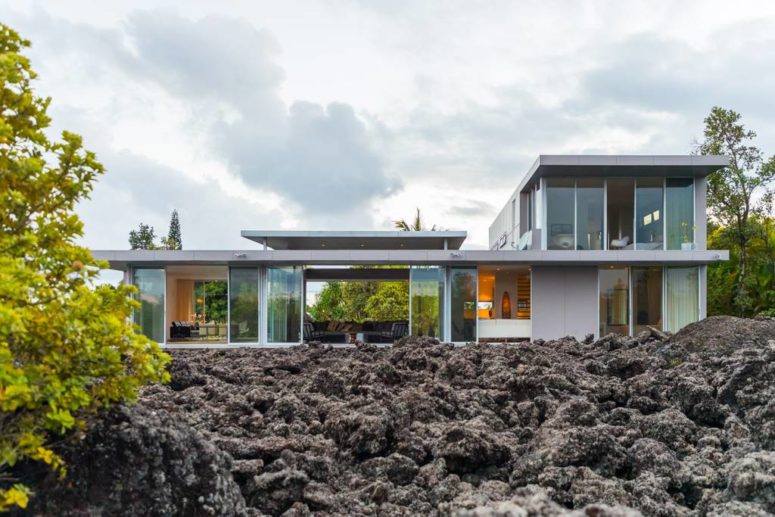
Q: What have some of the early responses from renters been?
A: Fear, joy, confusion.
Fear from exposure to local culture or flora and fauna: insects, naked or slightly gruff Puna hippies, geckos, or singing frogs at night.
Joy, if you’re sensually attuned, from feeling connected to a powerful relationship between building and environment.
Confusion about being in a very modern house with all the amenities, yet feeling so isolated on a black moonscape in a sort of “empty zone” with no stores or cell phone coverage.
To get more information on LavaFlow 1 visit: www.lavaflowhouse.com/availability
